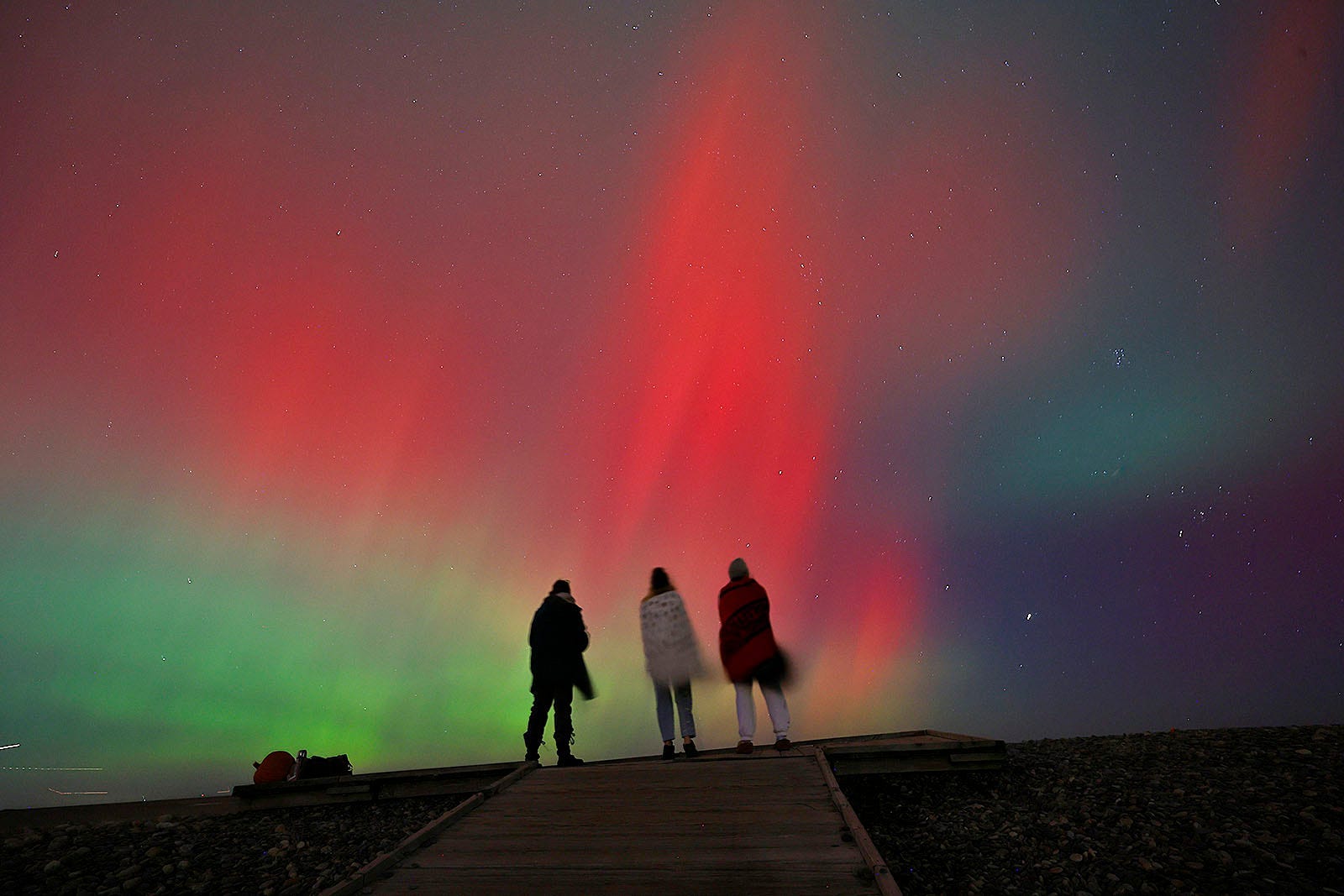
A Hues Distinctively Celebration
This Thanksgiving, as families gather around tables, a celestial event may provide an extra reason to step outside and look up. A series of geomagnetic storms associated with recent solar activity forecasted by the National Oceanic and Atmospheric Administration (NOAA) will offer an exceptional display of the northern lights, or aurora borealis, across parts of the northern United States.
These mesmerizing lights, known for their green and reddish hues, can create a spectacular backdrop for any Thanksgiving celebration. “Aurora chasers have a reason to be thankful this Thursday,” NOAA indicated, referring to the expected visibility of these phenomena as a result of a coronal mass ejection from the sun.
What to Expect (When You’re Expecting Auroras)
This week, a geomagnetic storm watch has been issued for Thanksgiving and Black Friday, with predictions for an auroral display visible across a broader area. NOAA’s space weather prediction center reports that the solar storm, classified as a G1 (minor) on Thanksgiving and potentially escalating to a G2 (moderate) on Black Friday, is expected to produce vibrant auroras.
Viewability and Optimal Locations
Ideal viewing conditions will depend on local weather; however, areas from New York to Idaho are among the exciting spots where the auroras could light up the night sky.
Timing Perfect for Stargazing
According to experts, the optimal timing for viewing the northern lights is typically within one to two hours around midnight. Those eager to catch a glimpse are encouraged to find dark, open spaces far from light pollution.
The Science Behind the Lights
The northern lights are a natural display resulting from charged solar particles colliding with Earth’s atmosphere. As these particles interact with atmospheric gases, they release energy, manifesting in the beautiful flickers of light that are the hallmark of the aurora borealis.
A Heightened Activity Period
As the sun is currently at the peak of its 11-year cycle, auroras have been more frequently documented, providing exceptional opportunities for viewing. With increased sunspot activity and coronal mass ejections, the higher levels of solar activity promise that auroras will continue to be visible for the foreseeable future.
In Conclusion: A Call to Action
If you are in a position to witness this natural wonder, take some time this Thanksgiving night to step outside, gaze at the firmament, and perhaps snap a few photographs. A reminder from NOAA: “If you are in the right place, the auroras can be quite pleasing to look at.”
